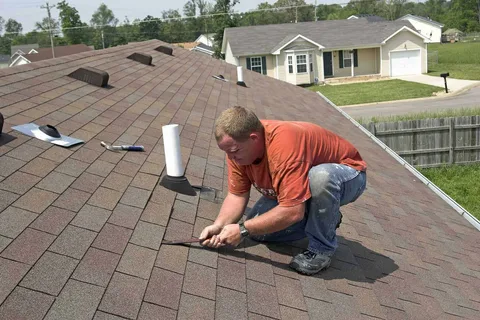Flat roofs, though popular for their simplicity and modern aesthetic, are prone to specific issues such as leaks, ponding water, and membrane damage. Repairing a flat roof requires a thorough understanding of the common problems and the appropriate techniques to address them. Here’s a practical guide to help you effectively repair your flat roof.
1. Inspect the Roof
Begin by inspecting the flat roof to identify the areas that need repair. Look for common problems such as cracks, blisters, and ponding water. Check the roof surface, seams, and flashing for signs of damage. Use a ladder to safely access the roof and a pair of binoculars if needed to examine hard-to-reach areas.
2. Gather Tools and Materials
To repair a flat roof, you’ll need several tools and materials, including:
- Safety ladder and harness
- Flat roof repair kit (includes roofing cement, patches, and primer)
- Utility knife
- Wire brush or sandpaper
- Roofing sealant or membrane
- Broom or brush for cleaning
Having these items ready will streamline the repair process.
3. Clean the Roof Surface
Before starting repairs, thoroughly clean the roof surface. Use a broom or brush to remove debris, dirt, and loose material. For stubborn stains or residues, use a wire brush or sandpaper. Cleaning is essential for ensuring that the repair materials adhere properly.
4. Address Leaks and Cracks
For leaks and cracks, apply a roofing cement or sealant. Clean and dry the area around the damage, then apply a generous amount of roofing cement. Use a utility knife to cut a patch from a roofing membrane or material that matches your existing roof. Press the patch firmly into place over the cement and smooth the edges to ensure a watertight seal.
5. Repair Ponding Water
Ponding water occurs when the flat roof does not drain properly. To address this, ensure that all drains and downspouts are clear of debris. If ponding persists, you may need to install additional drainage solutions or modify the roof’s slope to facilitate better water runoff.
6. Check and Repair Flashing
Flashing around vents, chimneys, and other roof penetrations can deteriorate over time. Inspect these areas for gaps or damage. Apply a roofing sealant around the flashing to fill any gaps and ensure a watertight seal. If the flashing is extensively damaged, consider replacing it with new flashing.
7. Inspect and Maintain
After completing the repairs, conduct a thorough inspection of the entire roof to ensure all issues have been addressed. Regular maintenance is crucial for extending the life of your flat roof. Schedule periodic inspections, clear debris, and address minor issues promptly to prevent major repairs.
Conclusion
Repairing a flat roof involves assessing the damage, cleaning the surface, and applying appropriate repair techniques. By following these steps, you can effectively address leaks, cracks, and other issues, ensuring the longevity and performance of your flat roof. Regular maintenance will help protect your home from water damage and extend the life of your roofing system.
Read More About

